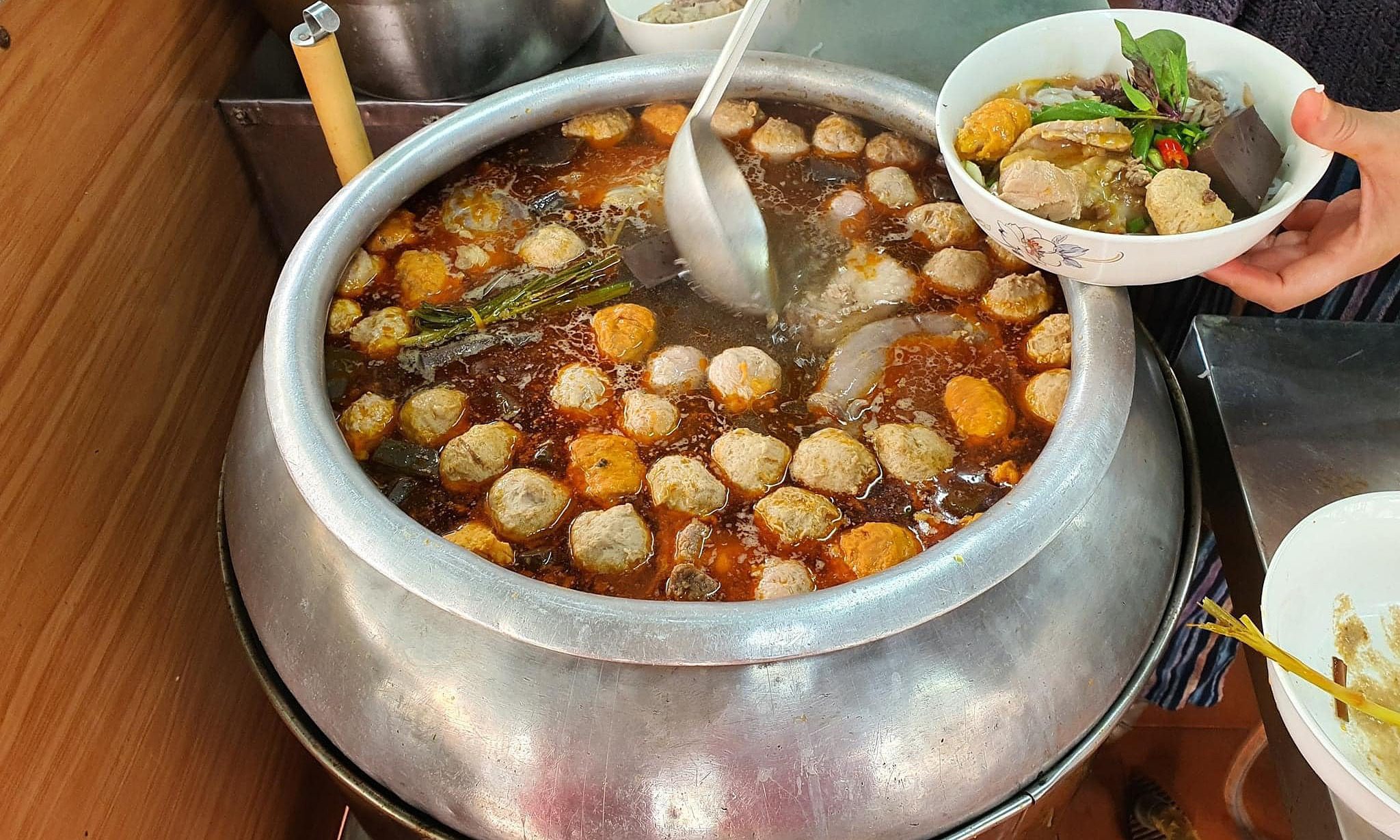The Rich Heritage of Bun Bo Hue
In the heart of central Vietnam, bun bo Hue is more than just a dish; it is a culinary tradition that has been passed down through generations. This spicy beef noodle soup is deeply rooted in the culture of Hue, where its origins can be traced back to spiritual rituals and village festivals.
According to Mai Thi Tra, a 91-year-old culinary artisan from Hue, the dish originated from ceremonial offerings made during village festivals. After these rituals, leftover beef was used to create a broth that was served with sticky rice. Over time, as rice vermicelli became more popular, people began replacing sticky rice with noodles, leading to the evolution of what we now know as bun bo Hue.
As the dish evolved, additional toppings such as pork knuckle, crab rolls, blood jelly, and fresh herbs were introduced, enhancing its flavor and texture. Today, bun bo Hue is often served with herbs and even rice, making it a versatile and satisfying meal.
The Role of Van Cu Village
One of the key elements that contribute to the distinctiveness of bun bo Hue is the noodles from Van Cu Village, where people have been making noodles for over 400 years. These noodles are known for their white, springy texture, which allows them to soak up the rich broth without falling apart. They are perfectly suited for this iconic dish.
In the past, Hue women would cook bun bo Hue at home and carry it through the streets in baskets to sell. It was a staple of daily life, and locals often refer to it as the “soul” of Hue cuisine. Each cook adds their own unique twist, ensuring that no two bowls are ever exactly the same.
The Secret Behind the Broth
What truly sets bun bo Hue apart is its broth. The process begins with cleaning and boiling beef bones, which are then simmered uncovered to maintain clarity and sweetness. Whole lemongrass is added for fragrance, while mam ruoc (shrimp paste) provides a savory depth without overpowering the soup.
A typical bowl of bun bo Hue includes slices of pork hock, brisket or beef shank, and a chunk of blood jelly, all soaking in a vibrant red-orange broth. This color comes from chili oil, and chopped scallions are added for a kick and a pop of green.
Spiciness and Flavor Balance
According to Vietnamese food expert Ho Dac Thieu Anh, bun bo Hue must be spicy. However, the heat does not come solely from chili oil. It also includes lemongrass, chili sauce, and chilies soaked in fish sauce. She emphasizes that the broth’s sweetness should come from the bones, not from added sugar, creating a balanced and flavorful experience.
Another crucial element in the dish’s flavor is the pot used for cooking. In Hue, many still use a traditional aluminum pot that resembles a clay one, with a round base and small opening. According to historian Tran Duc Anh Son, this shape helps retain heat and brings out the best in the broth. Some believe that soup ladled from these pots always tastes better.
Health Benefits and Cultural Significance
Thieu Anh believes that bun bo Hue is not only delicious but also beneficial for health. In Eastern food philosophy, beef is believed to improve blood circulation, pork hock boosts energy and clears toxins, and lemongrass aids digestion and helps fight off colds. This makes bun bo Hue a well-rounded dish that nourishes both the body and the soul.
Interestingly, people in Hue do not typically refer to the dish as bun bo Hue. To them, it is simply bun bo, a common part of their daily meals. It is outsiders or visitors who use the full name, highlighting the dish’s cultural significance.
Global Reach and Legacy
Once a humble street food, bun bo Hue has now gained international recognition. It is now served worldwide in countries such as the U.S., France, Canada, and Australia. Despite its global presence, the name “Hue” remains attached to it, honoring its roots and preserving its rich heritage.










